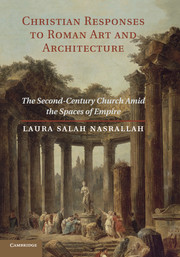 Christian Responses to Roman Art and Architecture
Christian Responses to Roman Art and Architecture EPILOGUE
Summary
Two texts by lucian briefly encapsulate some of the key issues of this book. In Lucian's Images or Representations, the speaker Lykinos tells Polystratos the story of how he saw a woman and was practically turned to stone, “more motionless than statues” (Imag. 1). The play between statues and people continues:
“Have you ever travelled to Knidos, Polystratos?”
“Yes, certainly!”
“So then you saw their Aphrodite, no doubt?”
“Yes, by Zeus, the most beautiful of Praxiteles' creations.”
“But have you also heard the story which the inhabitants tell about her, how someone fell in love with the statue, and, unnoticed, was left in the temple and had sexual intercourse with the statue, as much as that was possible?” (4)
Lykinos hints at the famous story of the Knidia's violation, and he and Polystratos display how they are connoisseurs of culture, tourists, or worshippers in Knidos.
After bantering sophisticatedly about other statuary, Lykinos and Polystratos return to the topic at hand: how to describe the woman Lykinos saw. He describes her as if a sculptor had formed her from the very best statues: “…he takes the head alone from the Knidia, for nothing else is needed, since the body is naked. Around the hair, and the forehead and the well-drawn brows, will be just as Praxiteles made them, and the softness of the eyes together with their brightness and graciousness – this too will be guarded according to Praxiteles' conception.
- Type
- Chapter
- Information
- Christian Responses to Roman Art and ArchitectureThe Second-Century Church amid the Spaces of Empire, pp. 296 - 302Publisher: Cambridge University PressPrint publication year: 2010


